DISCLAIMER: This is a fictional build. Any similarities to real vehicles, systems, or organizations are purely coincidental.
Also click me to skip the long post
"Luxury is just another word for Artillery."
CREDITS:
Uses MVC's Gear Shifter system.
Uses LocalDealer's;
1.) Leaf spring suspensions
2.) Shifter stick
3.) Pedals
4.) 75mm Cannon
BE WARNED: This build uses items from other users, if you plan on modifying/reuploading this build, you will have to credit the same users I've credited in this post. Ignoring this may result in your upload taken down.
KNOWN ISSUES:
1.) It does not limit your speed when staying in one gear. I guess it is a way to be user friendly.
2.) No it is not VR friendly. I do not plan to make one for VR, so if you do upload one, just be noted of the credits. :)
3.) Gas pedal might not be going the correct way.
4.) I finished it in 5 days. There may be hidden issues I have missed, if so please do let me know.
DRIVING CONTROLS:
PITCH : Gas
ROLL : Steer
YAW : Change Gear
--NOTE: Pitch is unidirectional. As long as you're in gear it'll move forward or backward.--
CANNON CONTROLS:
VTOL : Traverse
TRIM : Elevate
ACTIVATION GROUPS:
AG1 : Lights
AG2 : Open Engine Bay
AG3 : Enable Cannon
OTHER INFORMATION:
TOP SPEED: 50kM/H
GEARS: 5F:1R
NO GALLERY
Discontinued Transport Version
WARNING:
From this point on will be the fictional lore of the truck, it'll be long so click me to jump to the comments.
THE START
G.D. Atelier
G.D. Atelier; Shorthand for Guiseppi Dedios Atelier; is an Arcavitan designer who aimed to create vehicles for civilian use, mainly for personal ownership.
Atelier's systems were created under the patents of Lantz and Nerkel from Lantz-Nerkel Motorwagenfabrik.
G.D. Atelier's History
Guiseppi Dedios Atelier was born in 1872 in Foldaria, Arcavita. Initially working as a farmer, he became involved with machinery after purchasing multiple tractors from the Lantz-Nerkel Motorwagenfabrik between 1897 and 1902. His frequent mechanical inquiries and experimental modifications led to a renewed friendship with Lantz and Nerkel, whom he had attended school with in earlier years. In 1907, Atelier established Atelier Lavori di Ingegneria and began designing commercial vehicles.
In 1911, the company released its first major model, the Valerie truck, developed at the same time as Lantz-Nerkel’s LNM Lkw.08 which was released in 1908. He borrowed their design and used it as reference for the truck, however took longer to complete as Atelier Engineering Works was relatively newly founded and had to make sure their very first model would make a mark. Due to stronger economic conditions and with the help of Lantz and Nerkel, Atelier was able to introduce Valerie with a more premium build.
However, during World War I, the Arcavitan president, a Valerie owner himself, ordered the vehicle to be refitted with a 75mm field cannon, initiating Atelier’s participation in wartime manufacturing. Post-war, Atelier Engineering continued to produce limited runs and specialized vehicle prototypes, with Valerie remaining its most historically significant model.
Valerie's History
By 1911, the Valerie truck had gained popularity among Arcavitan civilians for its rugged construction and refined detailing, standing apart from its more utilitarian predecessors. Inspired by the Lantz-Nerkel Lkw.08 but boasting a sturdier chassis and a smoother ride, Valerie quickly became a staple among farmers and merchants who could afford its elevated price tag. When war erupted in 1914, the Arcavitan president—himself a Valerie owner—ordered a series of trucks to be militarized with 75mm field cannons. This refit launched Atelier Engineering Works into the realm of wartime manufacturing, with Valerie transitioning from a civilian icon to a military workhorse. The truck's adaptability led to multiple variants including signal corps vehicles, ambulances, and troop transports, praised on the battlefield for their reliability under pressure.
However, Valerie’s strengths came with a steep price. Its intricate assembly, premium materials, and limited production capacity made it significantly more expensive than rival models being mass-produced by other manufacturers. By 1917, Arcavitan military procurement officials deemed Valerie unsustainable for continued wartime use, citing cost overruns and repair difficulties in frontline conditions. Although admired for its craftsmanship and battlefield resilience, the truck was officially decommissioned from active production late that year, closing the chapter on one of Atelier’s most ambitious ventures. Despite its withdrawal, Valerie had already cemented its place in Arcavitan history as a symbol of elegance that briefly bridged civilian pride and military necessity.
Atelier Lavori di Ingegneria
Founded in Foldaria in 1907, Atelier Lavori di Ingegneria served as the civilian backbone of Atelier’s vision. Focusing on personal vehicles and utilitarian solutions for rural and urban life, the company aimed to uplift Arcavita’s domestic transport sector by merging durable machinery with refined engineering. Between 1911 and 1914, its development labs tested over a dozen experimental chassis, suspension systems, and gearbox configurations. Many of these prototypes never reached full-scale production, but their design philosophies would inform later military adaptations.
One of the firm’s lesser-known accomplishments was the experimental Modello 5C, a compact delivery van with modular panels designed for regional bakeries and apothecaries. Though only 38 units were ever built, the 5C was lauded in regional papers for its reliability and maneuverability on the tight cobbled roads of Foldaria and Menzia.
In the postwar years, Atelier Lavori di Ingegneria pivoted toward specialized restorations and artisan mechanical work. Vehicles were crafted with hand-tooled finishes and often commissioned by private collectors or historical societies. Atelier’s work during this time played a crucial role in establishing Arcavita’s mechanical heritage as a cultural point of pride, with the Foldaria Auto Museum featuring a dedicated wing to Atelier’s legacy since 1948.
Atelier Armatura Militare
Established ad hoc in late 1914 as war demands surged, Atelier Armatura Militare functioned as the wartime extension of Atelier’s engineering vision. Utilizing the same workshops and skeleton crews from the civilian division, this arm focused entirely on converting civilian designs into battlefield-ready vehicles. The Valerie became the centerpiece of their arsenal, but other prototypes such as the Fortegno Armored Courier and V-11 Mobile Field Kitchen pushed the boundary between comfort and combat.
Notably, Atelier experimented with semi-rigid armor plating that could be retrofitted onto existing civilian chassis without major reworking—leading to the famed “Quiltplate Valerie,” a stopgap version that resembled patchwork but offered modest shrapnel resistance. Military dispatches noted the aesthetic resemblance to traditional Arcavitan quiltwork, giving the vehicle a distinct cultural flair even in wartime.
Despite budget constraints and material shortages, Atelier Armatura Militare was praised for its ingenuity and craftsmanship. However, as industrialized warfare accelerated, its small-scale methods fell out of favor against mass production and standardization. The arm was quietly shuttered in late 1918, though its influence lingered in boutique military engineering across Arcavita. Some former staff were recruited into Officina Regale, Arcavita’s royal arsenal works, blending Atelier’s artisanal legacy with more formal state manufacturing.
Specifications
Spotlights
- EternalDarkness 3 months ago
- CrazyCatZe 3 months ago
- UnguidedCylinder 3 months ago
- BMilan 3 months ago
- ShiroNeko 3 months ago
- RicardoACE 3 months ago
- Ayanon 3 months ago
- LocalDealer 3 months ago
- ChihiroFujisaki 3 months ago
General Characteristics
- Created On Windows
- Wingspan 7.2ft (2.2m)
- Length 22.5ft (6.9m)
- Height 8.6ft (2.6m)
- Empty Weight 10,159lbs (4,608kg)
- Loaded Weight 10,372lbs (4,704kg)
Performance
- Horse Power/Weight Ratio 0.002
- Wing Loading N/A
- Wing Area 0.0ft2 (0.0m2)
- Drag Points 0
Parts
- Number of Parts 740
- Control Surfaces 0
- Performance Cost 3,252

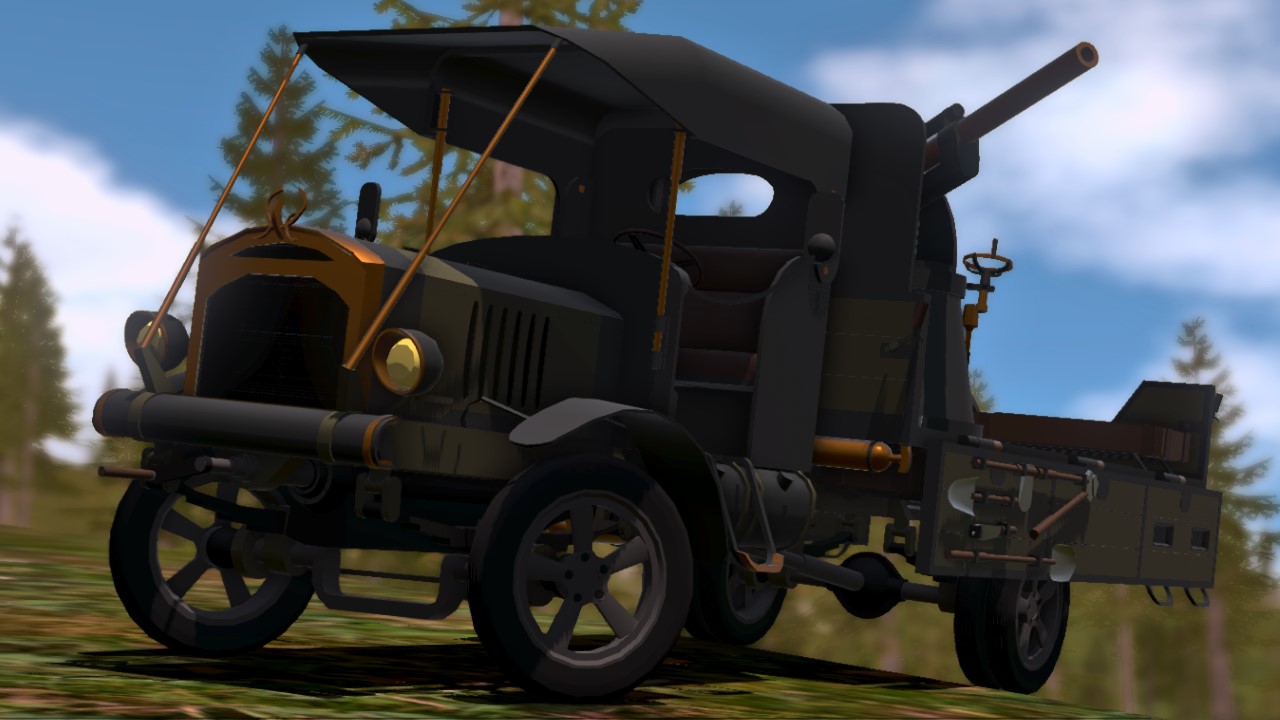
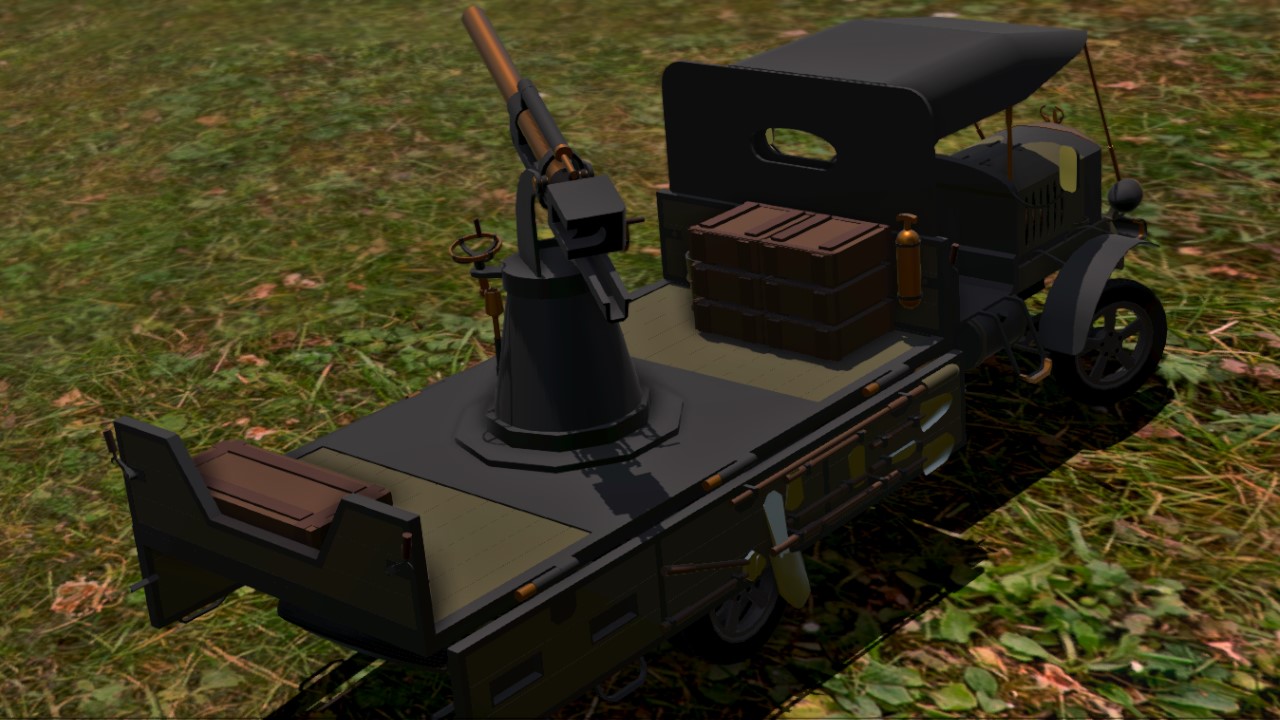
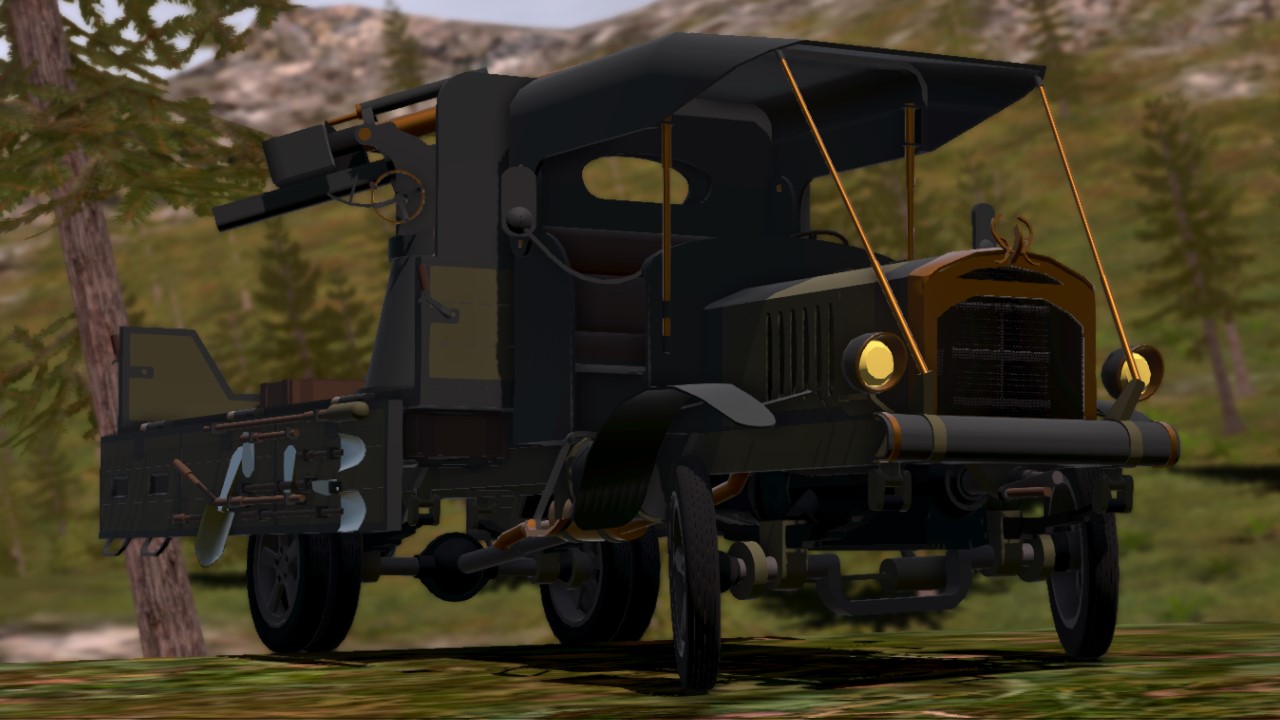
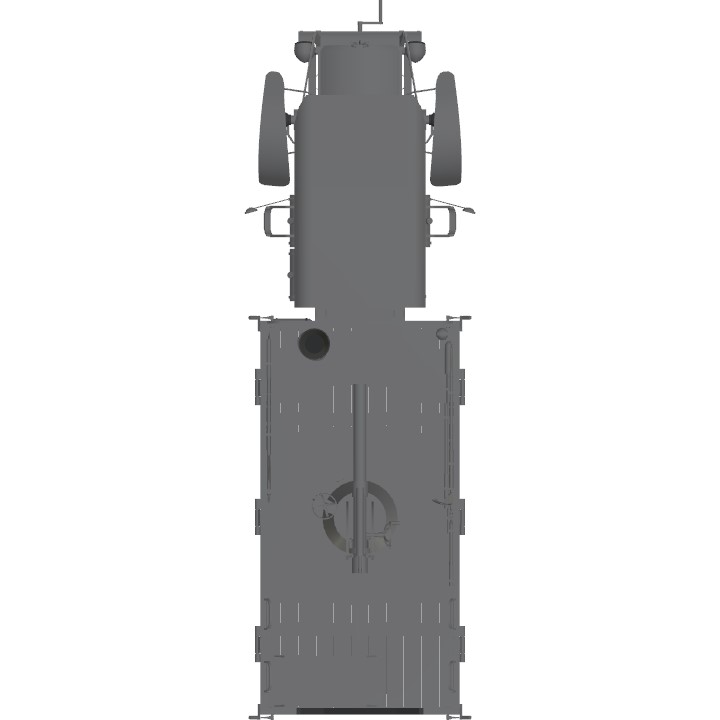
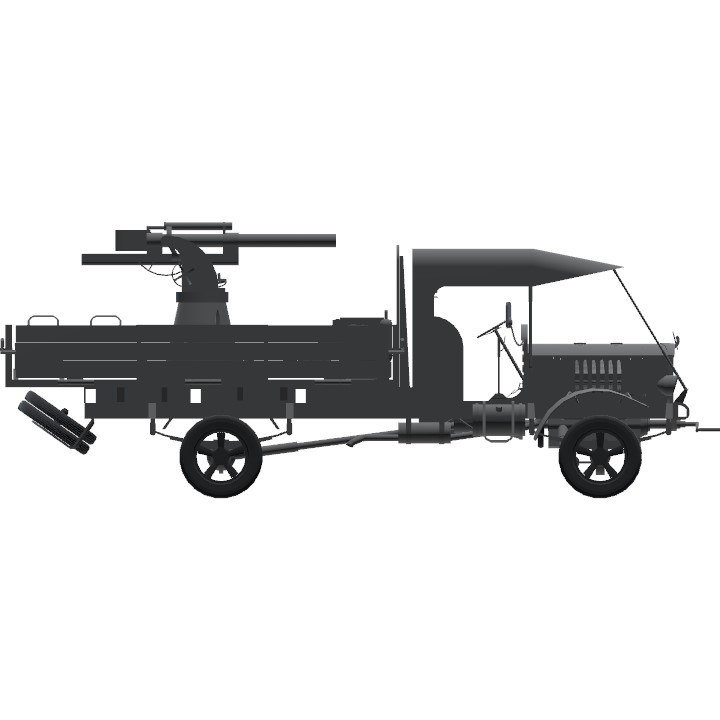
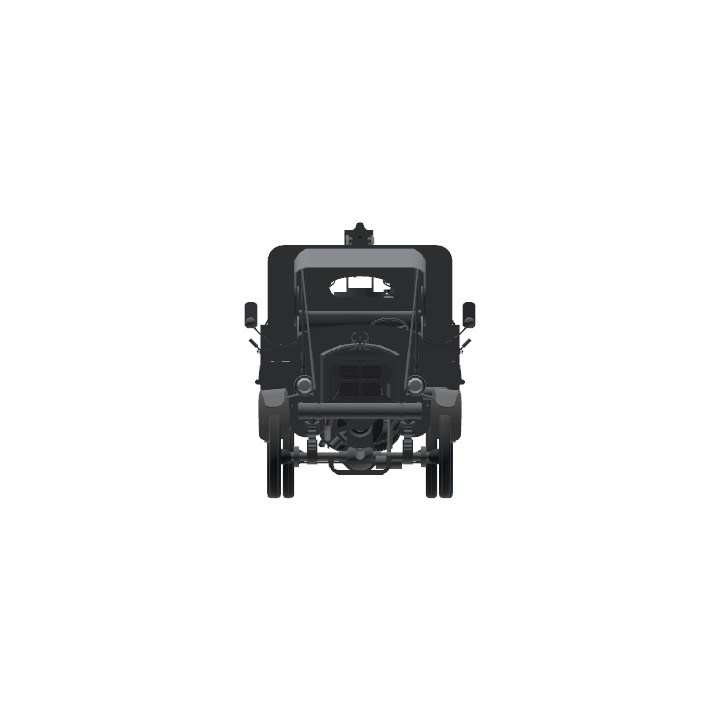
In case you really did skip everything:
DRIVING CONTROLS:
PITCH : Gas
ROLL : Steer
YAW : Change Gear
--NOTE: Pitch is unidirectional. As long as you're in gear it'll move forward or backward.--
CANNON CONTROLS:
VTOL : Traverse
TRIM : Elevate
ACTIVATION GROUPS:
AG1 : Lights
AG2 : Open Engine Bay
AG3 : Enable Cannon
Credits are pretty close to the photo, please take the time to read
U fr need catching up, the two is on tie
Amazing truck, and amazing description. I think that yours is the most detailed of the bunch, with all the shovels and stuff. 10/10